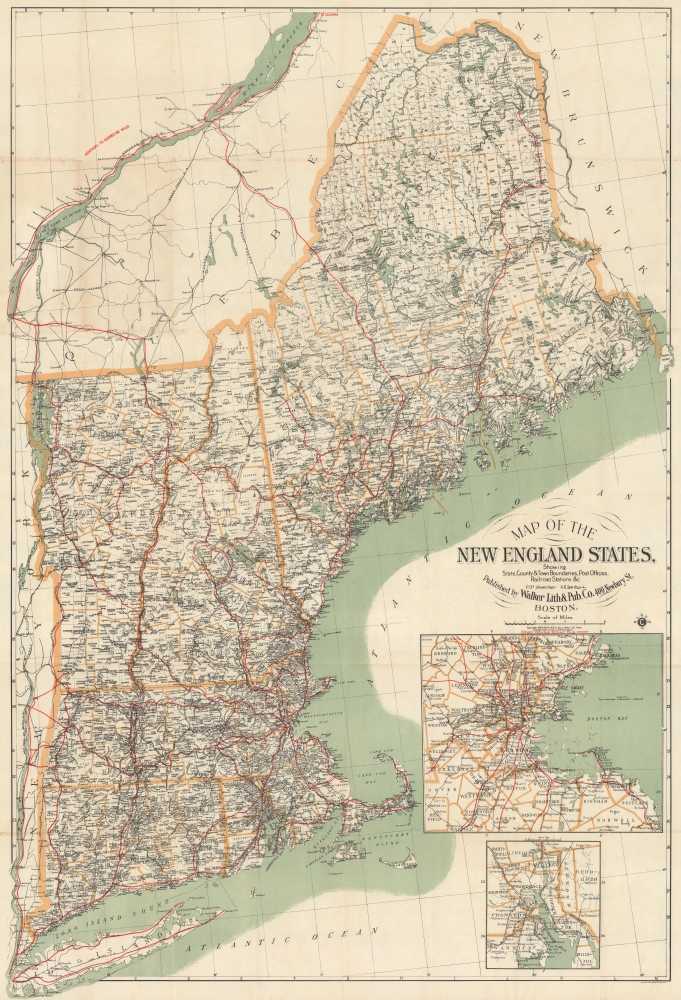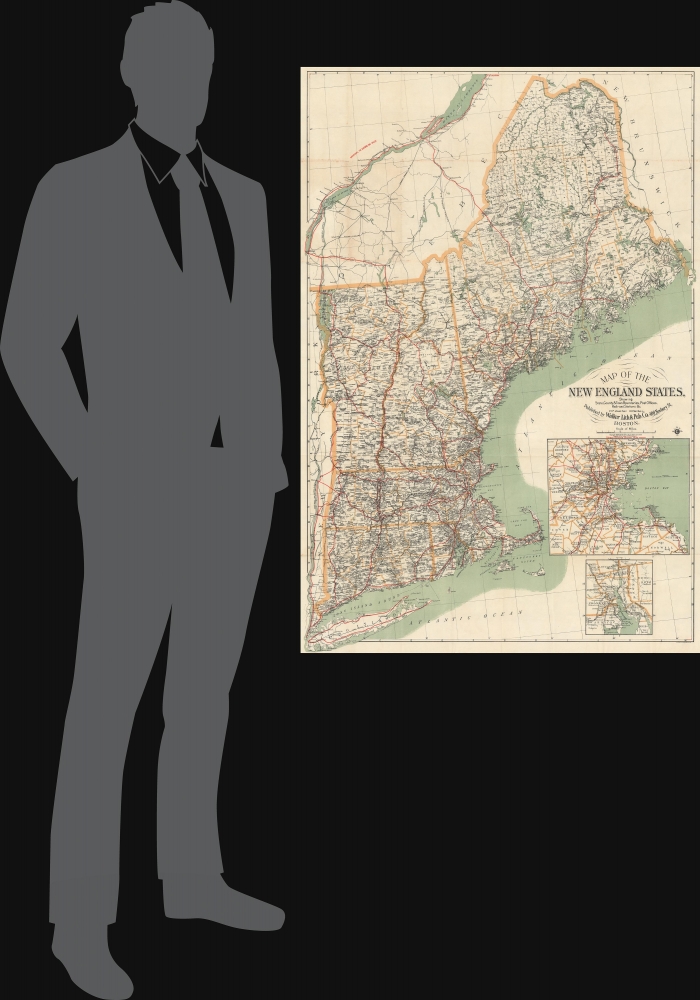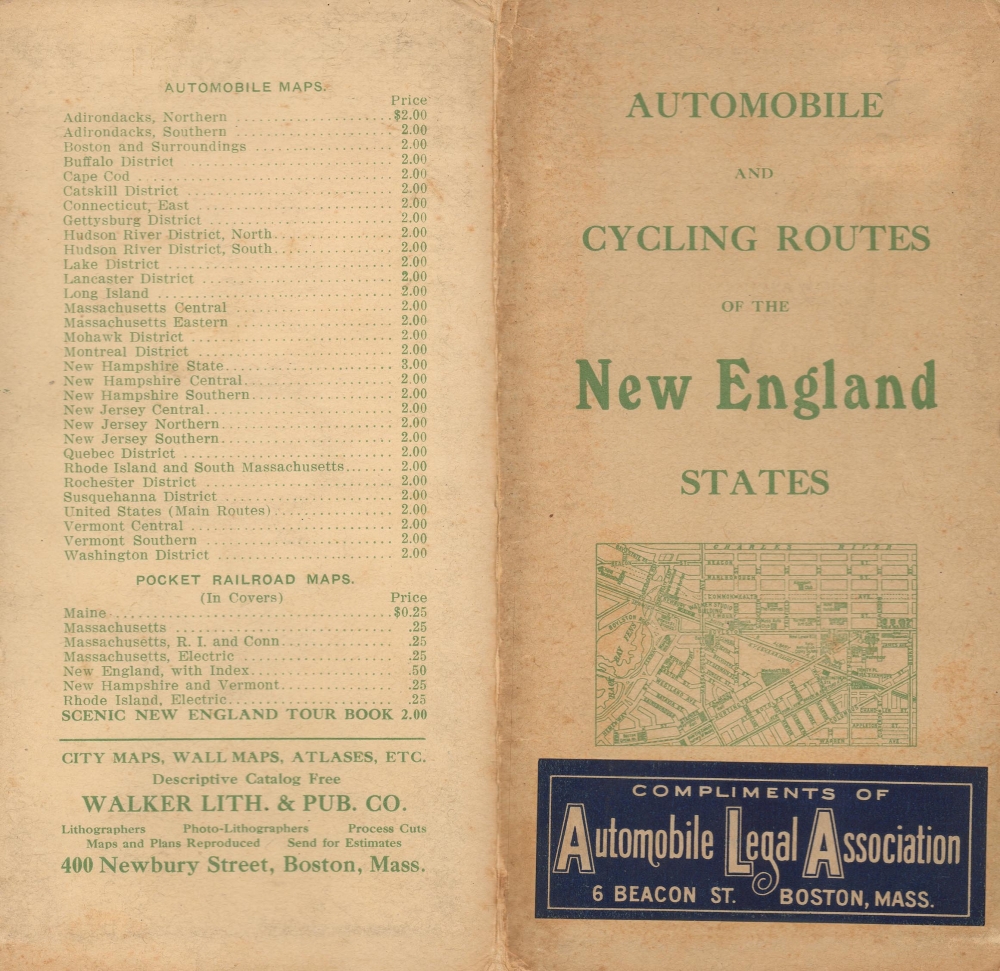This item has been sold, but you can get on the Waitlist to be notified if another example becomes available, or purchase a digital scan.
1909 Walker Map of New England
NewEnglandStates-walkerlithpub-1909
Title
1909 (dated) 41.75 x 28.5 in (106.045 x 72.39 cm) 1 : 750000
Description
A Closer Look
Coverage embraces New England from Maine to eastern New York, including Lake Champlain, the Hudson River, and New York City. Quebec from the U.S.-Canada border north to the St. Lawrence River is also included. Bold red lines highlight 'direct routes,' at the time, the only reliable 'roads.' Thin black lines mark the more extensive railroad network, with most lines identified. Counties are outlined in orange. Two insets appear in the lower-right: Boston and its environs and Narragansett Bay.From Bicycles and Automobiles
The bicycle emerged in the late 19th century as a reliable, safe, comfortable, and affordable tool for both transportation and recreation. Cycling clubs emerged as cyclists came together to determine the best routes, advocate for better roads, and just connect. Women, in particular, become very enthusiastic cyclists, as the bicycle provided freedom of movement and association - on bicycles the sexes could intermingle without parental oversight.Henry Ford introduced the Model T in October 1908. The Model T was the first easily maintained, reliable, mass-produced motorized transportation. Before the Model T, automobiles were expensive, hard-to-find, and unreliable. Thus, this map arrived at the beginning of the era when automobiles became accessible to not only the elite but to the public. This map thus represents the beginning of the American fascination with cars.
From about 1910 onwards, cyclists and motorists joined forces to sponsor the 'Good Roods Everywhere' movement, a collective lobbying effort to promote, as the name suggests, good roads.
Publication History and Census
This map was created and published by the Walker Lithograph and Publishing Company in 1909. Previous editions were published by George H. Walker and Company in 1904, 1905, and 1908. We note 2 examples of the present 1909 edition cataloged in OCLC: Osher Map Library at the University of Southern Maine and the University of Wisconsin-Milwaukee.Cartographer
George Hiram Walker (January 4, 1852 - November 14, 1927) was a Boston based publisher of books, views, and maps active in the late 19th and early 20th centuries. Born in Springfield, Vermont, Walker started his life as a dry goods merchant but developed an active interest in publishing during the early 1870s. Walker began publishing in 1878 when he partnered with an unknown New York Firm. Two years later, Walker brought the operation in house by partnering with his brother, Oscar W. Walker, in the opening of a lithography studio at 81 Milk Street, Boston. Shortly thereafter the firm expanded to new offices at 160 Tremont Street, Boston. The Walker brothers produced a large corpus of works, most of which focused on travel and tourism in New England. Walker also established the Walker-Gordon Milk Laboratory with Dr. Thomas Morgan Rotch and Gustave Gordon. This interesting investment was based on the premise that infant deaths could be avoided by providing higher quality milk. The company eventually became a great success, producing a high-quality cow milk that closely resembled human breast milk. In the process the Walker-Gordon laboratory developed many of the dairy health standards that are still with us today. Walker married Irene L. Loud on March 25, 1885. More by this mapmaker...






